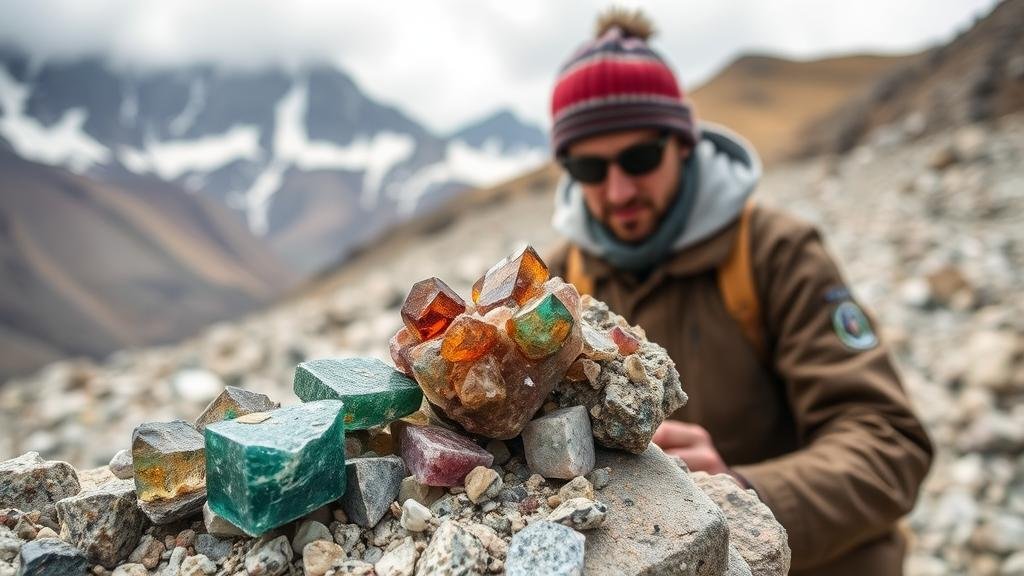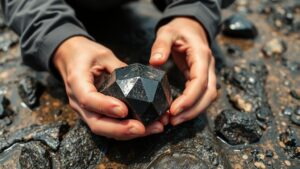Searching for tourmaline in the remote mountains of Afghanistan, famed for its multicolored crystals.
Introduction
Afghanistan is renowned not only for its rich history and cultural heritage but also for its exceptional mineral wealth. Among its most prized gems is tourmaline, a mineral celebrated for its striking range of colors and crystal formations. Rockhounds and mineral collectors venture into the remote mountains of Afghanistan in search of these multicolored crystals, a journey that combines adventure with the pursuit of geological treasure.
The Allure of Tourmaline
Tourmaline is one of the most varied and complex mineral species in the world, composed of boron-aluminosilicate that can exhibit every color of the rainbow. unique crystal chemistry of tourmaline allows for a plethora of colors and color zoning within the same crystal. Notably, Afghan tourmaline often showcases stunning hues of pink, green, blue, and even multicolored specimens.
Scientific Properties
The appeal of tourmaline to collectors can be partially attributed to its intricate composition. Scientifically, tourmaline is classified as a cyclosilicate mineral, characterized by its boron content and structural complexity. Key properties include:
- Hardness: 7 to 7.5 on the Mohs scale, making it a durable stone suitable for various types of jewelry.
- Specific Gravity: Typically ranges from 3.0 to 3.2, which is relatively high among gemstones.
- Crystalline Structure: Tourmaline forms in a trigonal crystal system, often developing long, prismatic crystals.
Tourmaline Mining Locations in Afghanistan
Afghanistan’s mountainous regions, particularly areas such as the Hindukush and Pamir mountains, are renowned for producing some of the finest and most diverse tourmaline specimens in the world.
Notable Mining Regions
Key localities include:
- Chapa Dara: Located in the Kunar province, known for its vivid pink and green tourmalines.
- Panjshir Valley: Famous for producing some of the deepest blues and greens, often showcasing stunning color zoning.
- Nuristan: A remote region where large, striking crystals are regularly unearthed by enthusiastic miners.
Collecting Tourmaline: Practical Tips
For rockhounds and mineral collectors interested in hunting for Afghan tourmaline, a thorough understanding of the landscape and conditions is essential. Here are some practical tips to maximize your search:
- Research the Location: Prior to venturing out, gather information on the specific geological formations of the targeted area, as tourmaline typically forms in pegmatitic environments.
- Use the Right Tools: Essential tools include a rock hammer, chisels, digging tools, and protective gear, such as gloves and safety goggles.
- Respect Local Guidelines: It is important to adhere to local mining regulations and customs to ensure a safe and respectful collecting experience.
The Challenges of Mining in Afghanistan
While the thrill of seeking multicolored tourmaline is enticing, aspiring collectors must acknowledge the numerous challenges associated with mining in Afghanistan. The geopolitical landscape, along with challenging terrain and climatic conditions, can pose significant obstacles. Also, security concerns must be taken into account, as some regions are less stable than others.
Potential Risks
- Weather Conditions: Be prepared for rapid changes in weather, particularly in the high-altitude terrain.
- Terrain Hazards: Rocky paths and steep inclines can be treacherous; proper footwear and hiking experience are crucial.
- Local Relations: Building rapport with local miners can enhance your experience and knowledge about the best areas for collection.
Conclusion
Collecting tourmaline in the remote mountains of Afghanistan is not merely a search for gemstones; it is an exploration of natures artistry and geological complexity. By understanding the unique properties of tourmaline, the key mining locations, and the associated challenges, collectors can embark on a rewarding adventure. Remember to respect local customs and environmental considerations, ensuring that your efforts align with sustainable practices within these beautiful yet fragile ecosystems.



